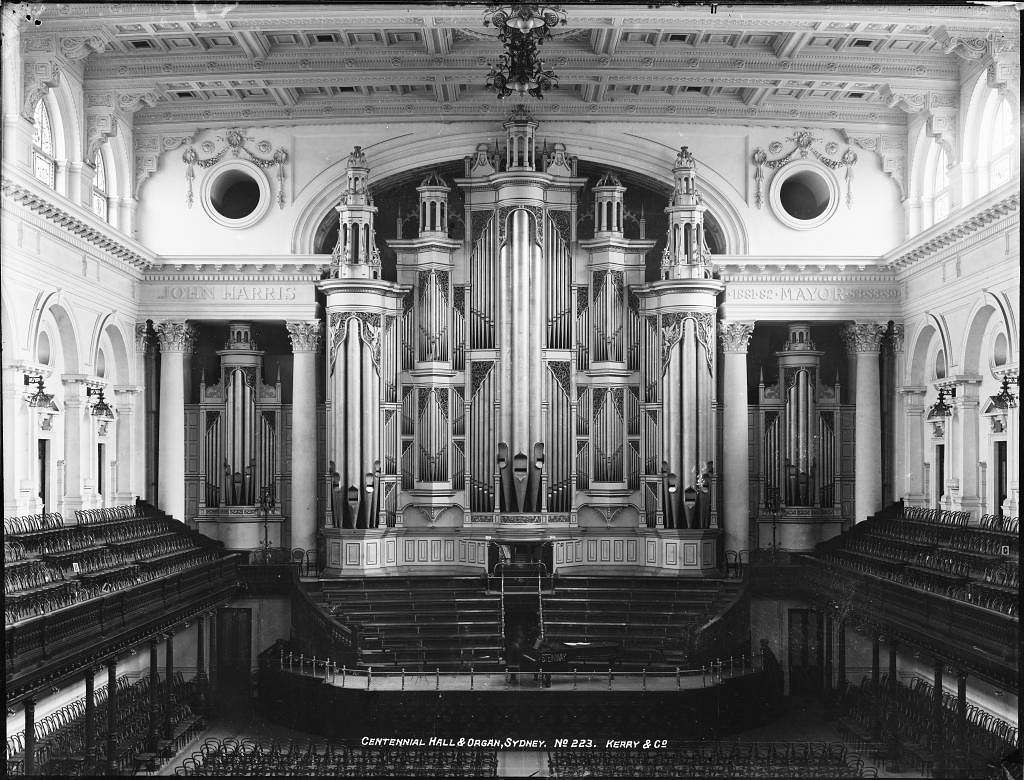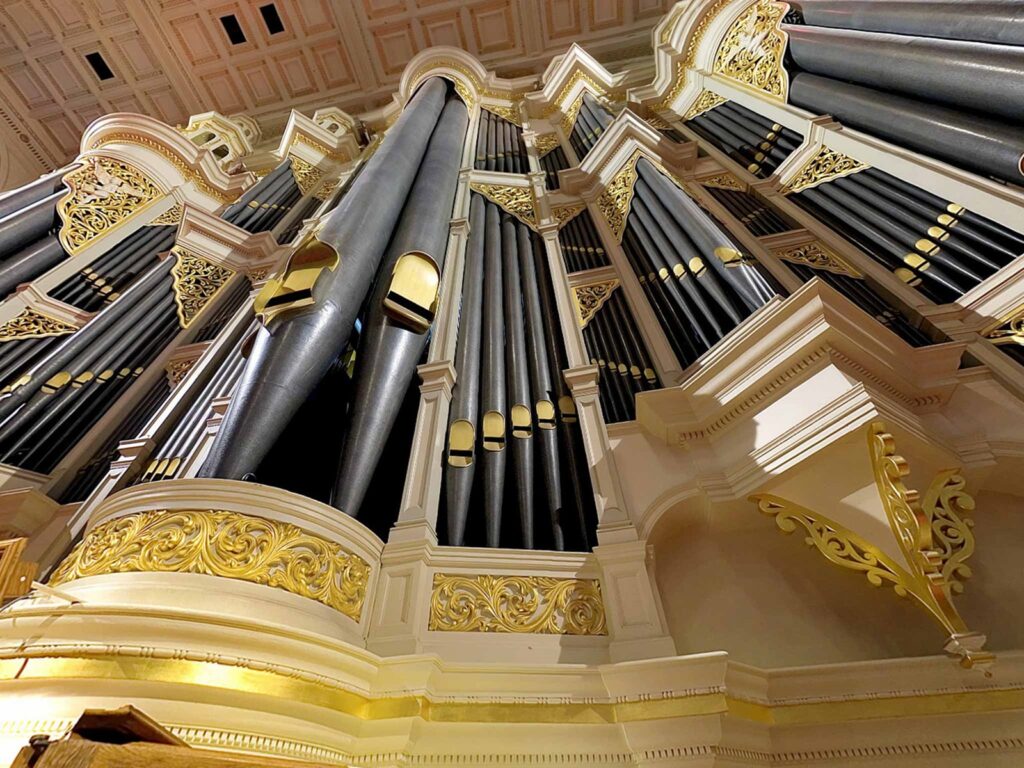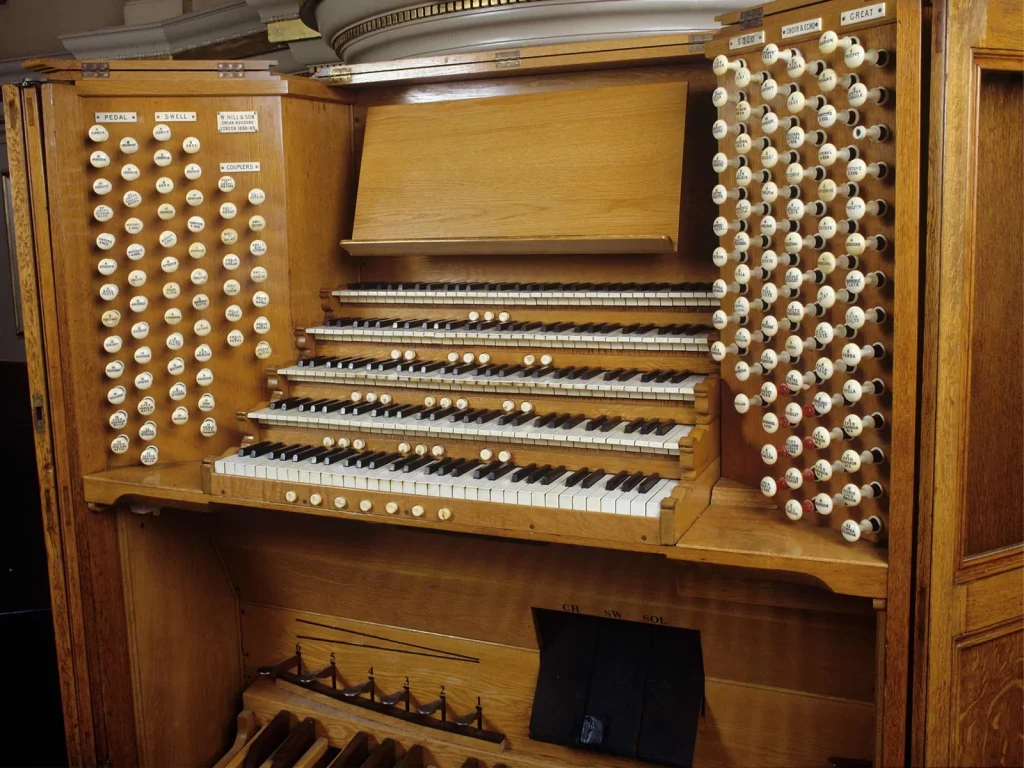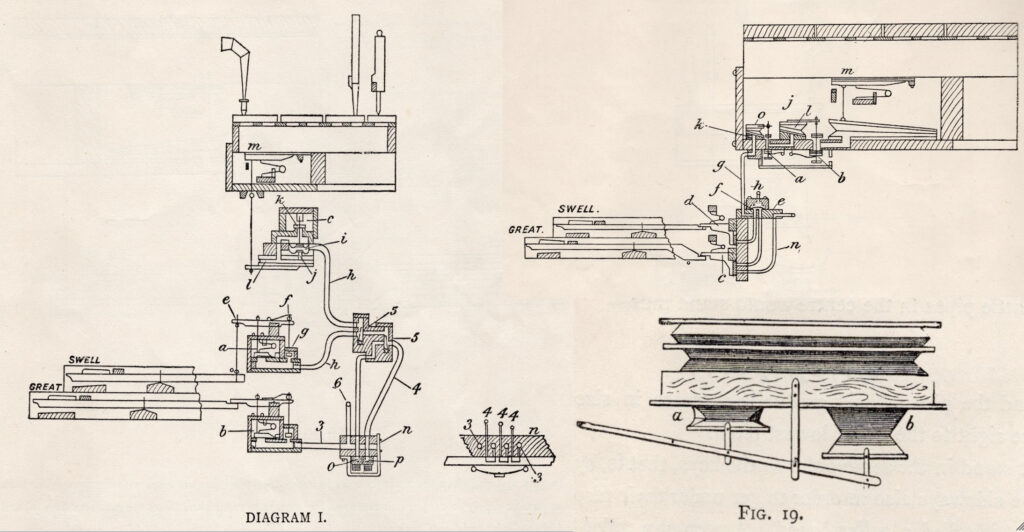Across Sydney, high in the lofts of cathedrals and sequestered in suburban churches and school halls, lie hundreds of complex mechanical musical instruments. Some are silent and forgotten, and others thunder with music every day of the week.

The pipe organ doesn’t feature in the lives of many 21st-century Sydneysiders. What was once the herald of public occasions and celebrations, providing music for the joy of weddings, the grief of funerals, and weekly church worship in Sydney, is considered by many a vague curiosity from a bygone era. But for a select group, the organ is a cherished and time-consuming passion.
The Organ Music Society of Sydney has aimed to foster interest in these instruments and their music for almost 80 years. A mix of organists, musicians, and enthusiasts gather for regular recitals and organ ‘rambles’ (going from instrument to instrument in one sitting). They also organise competitions, advocate and fundraise for instruments in danger of loss, and publish a quarterly journal on the ‘organ world’ of Sydney.
What is a Pipe Organ?
Until the turn of the 20th Century, the pipe organ was considered the most mechanically complex machine ever built. Evolving from the Roman Hydraulus, an early keyboard instrument that operated on displacing air with water through a series of tuned pipes, the modern organ is a continuation of an ancient tradition. Most organs have more than one keyboard, which play multiple ‘sets’ of pipes that make different sounds. These different sounds are activated by pulling ‘stops’, creating a wide palette of timbres, from a soft flute to a whole orchestra. This is where we get the expression ‘pulling out all the stops’.


Some organs in Sydney have over 100 stops spread over five keyboards, producing a chest-shaking roar at ‘full organ’, and others only have a few stops, making a softer but still deeply moving and musical sound. Connecting a key to a pipe can involve complex electronics, magnets, valves, leather, bellows, and mechanical linkages that travel several metres, cross divides, and turn corners. Organ builders were at the forefront of mechanical engineering, creating intricate machines that filled entire rooms and weighed several tonnes.

Organ Building Today
The Victorian organ-building industry in Sydney maintained stiff competition between large local firms and English builders, who leave behind instruments of every size and character. Today, only a handful of organ builders remain in Australia, and even less in Sydney. In partnership with the Organ Music Society of Sydney, I hope to document the work of these craftspeople in video, recording the rich skills handed down over centuries and promoting the work of the OMSS in popularising the organ. The clear passion and expertise held by the OMSS for this instrument will enrich an accessible, documentary-style introduction and record of the remaining Sydney organ builders.
Not being a portable instrument, the organ is a unique link between the aural and physical space they occupy. As history has shifted, the organ is a sound and a space that would be recognised by centuries of our forbears. Sydney’s organ builders are custodians of an immense tradition and skillset, and their dedication to preserving the organ for a new generation deserves recording and a wider interest.
